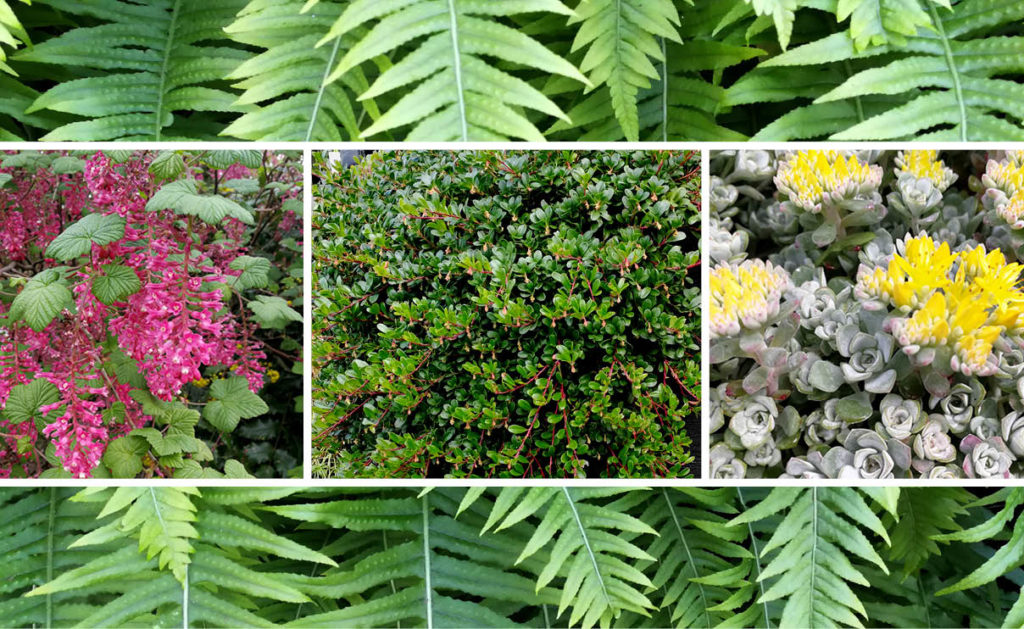by Matt Hall, Red Feather Horticulture –
Native gardens are one of our favourites (and our specialties) to install. They are beautiful, beneficial to local wildlife and, if well planned, can save on your watering bill. Even if not attempting a fully naturalized landscape, we try to include native plants in many of our designs. That said, there are some local plants that are fantastic in the garden and our first choice for many applications. Here are a selection:
Vine maple (Acer circinatum). In the wild, these small multi-stemmed trees are usually found in damp areas, under the canopy of larger trees. In the garden, they can be relied on to provide a lovely accent tree for a shade garden and are spectacular when they turn in the fall. A great alternative to planting a Japanese maple and like them, they can handle a bit of sun as long as they’re given water in the summer.
Red-flowering currant (Ribes sanguineum). In 1825, David Douglas sent samples of this plant back to London during his botanical expedition of the West Coast. The Royal Horticultural Society were so enamored with the shrub that its “acquisition was sufficient justification for the cost of the entire three-year expedition.” We wholeheartedly agree. One of the first shrubs to flower in the spring, it is likewise adored by hummingbirds and spring bees. Easily contained to 10 feet in height so it readily fits into most sunny gardens. We must confess though that we more often plant the cultivar “King Edward VII” as its flowers are a much richer pink than the original species.
Western Sword Fern (Polystichum munitum). These robust ferns are one of the most reliable native plants in our horticultural arsenal. They are a great filler in a shady garden and are terrific as a mass planting to naturalize a wooded area. One tip for sword fern maintenance: prune them back completely every second winter to keep them looking fresh.
Kinnikinnik (Arctostaphylos uva-ursi). A common sight on hillsides from Alaska to California, kinnikinnik has also crept into prevalence in our gardens as well. This low evergreen ground cover with bright red berries is as tough as it is pretty. Liking dry and sunny locations, it’s perfect for rockeries or as erosion control on slopes. Alternately, it is a fantastic choice if used as a “spiller” (cascading over the sides of larger pots and planters).
Broad-leaved Stonecrop (sedum spathulifolium). If you’ve ever noticed a grey succulent with bright yellow flowers growing in the rocks above the waterline then you’ve spotted “spath.” A tremendously hardy plant that is ridiculously easy to propagate and grow (any piece will root). Another rockery or potted plant that will thrive without any maintenance and can even grow vertically. For us it is also one of our main plants for greenroofing. The cultivar “Capo Blanco” is terrific and may be easier to find in garden centres.
To see photographs of the plants listed in the article, head over to the blog on our website (www.redfeatherhorticulture.com). If you feel a need for native plants on your property or some help in your garden in 2021, please feel free to drop us a line at info@redfeatherhorticulture.com. Good gardening!




